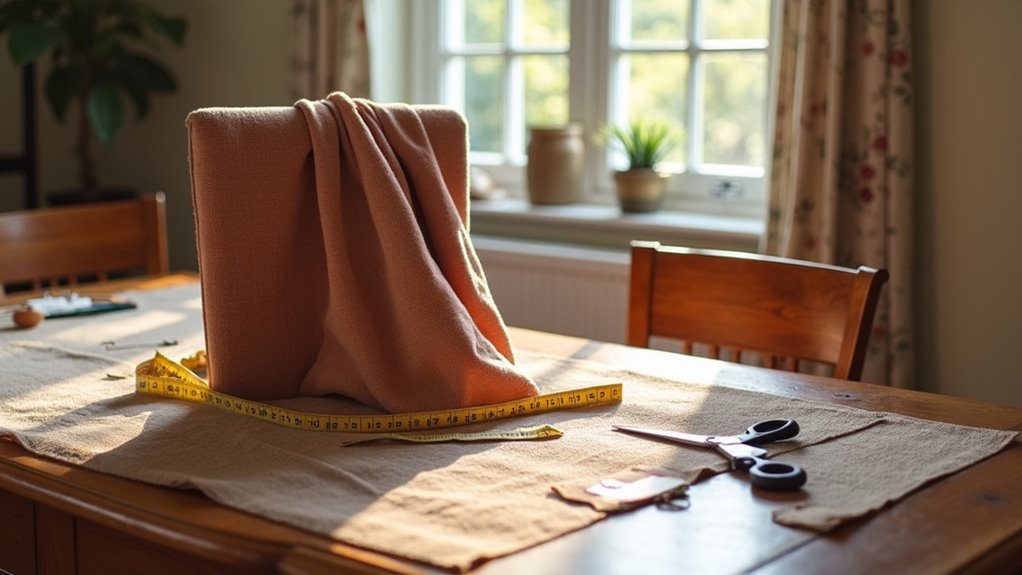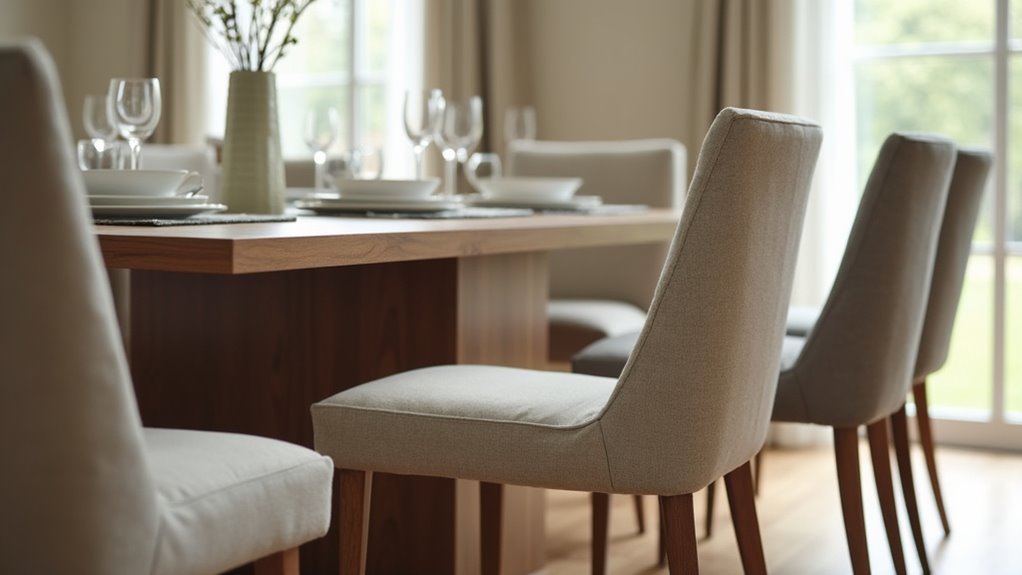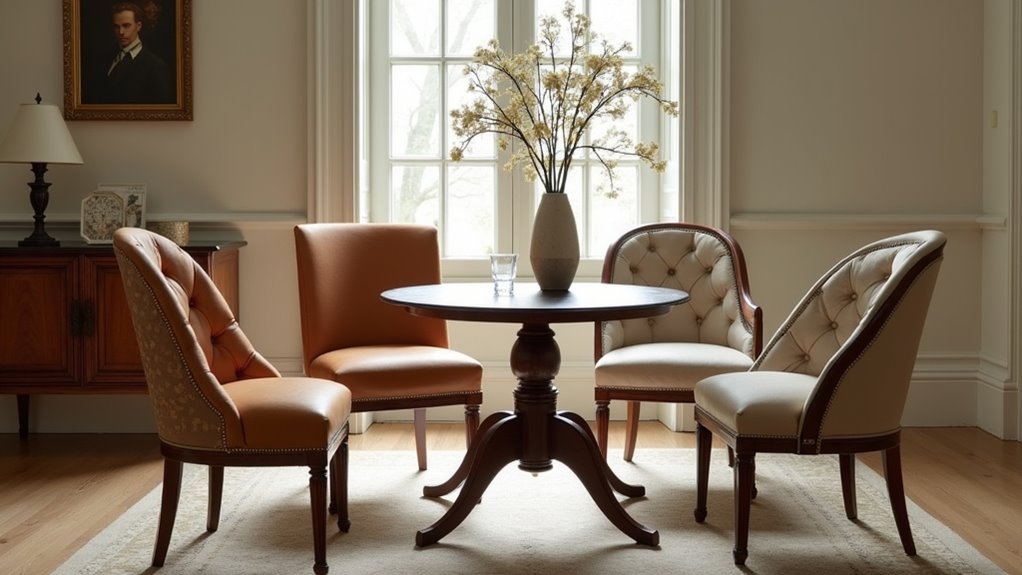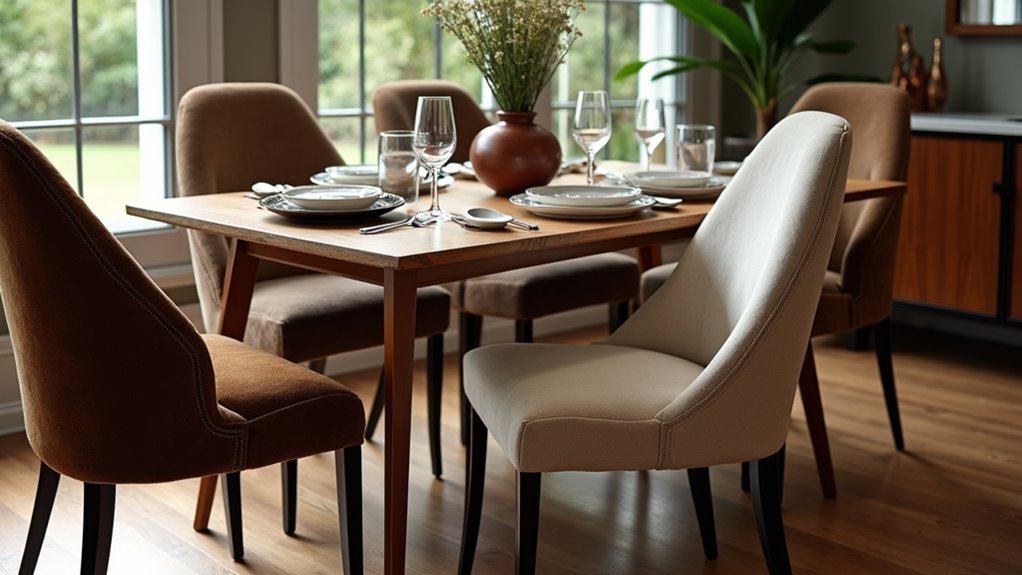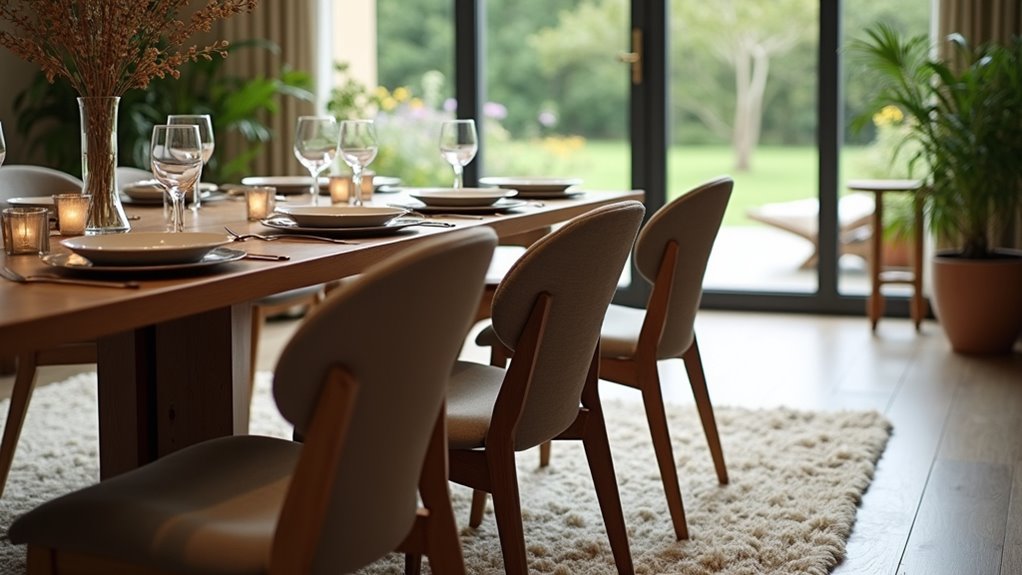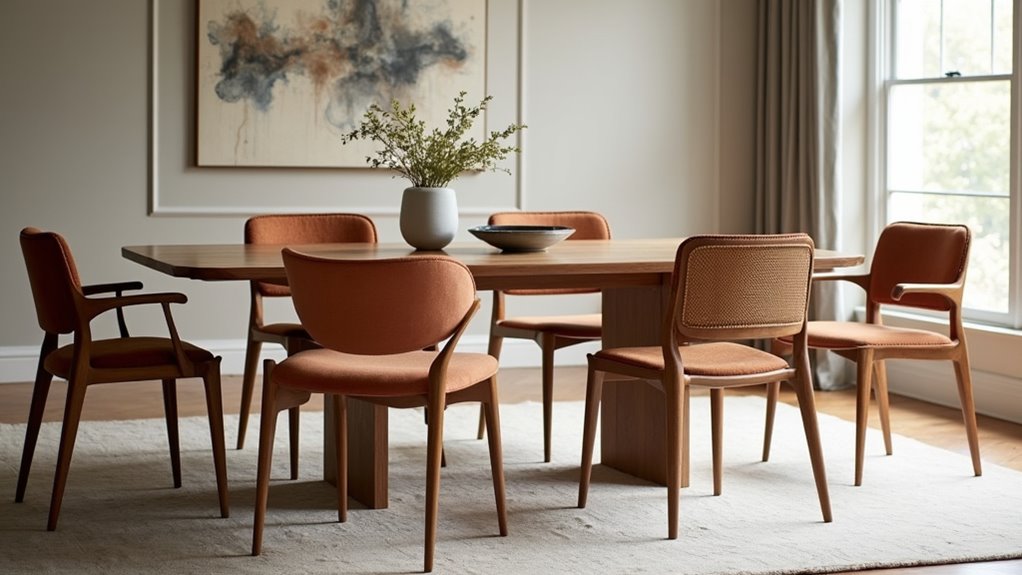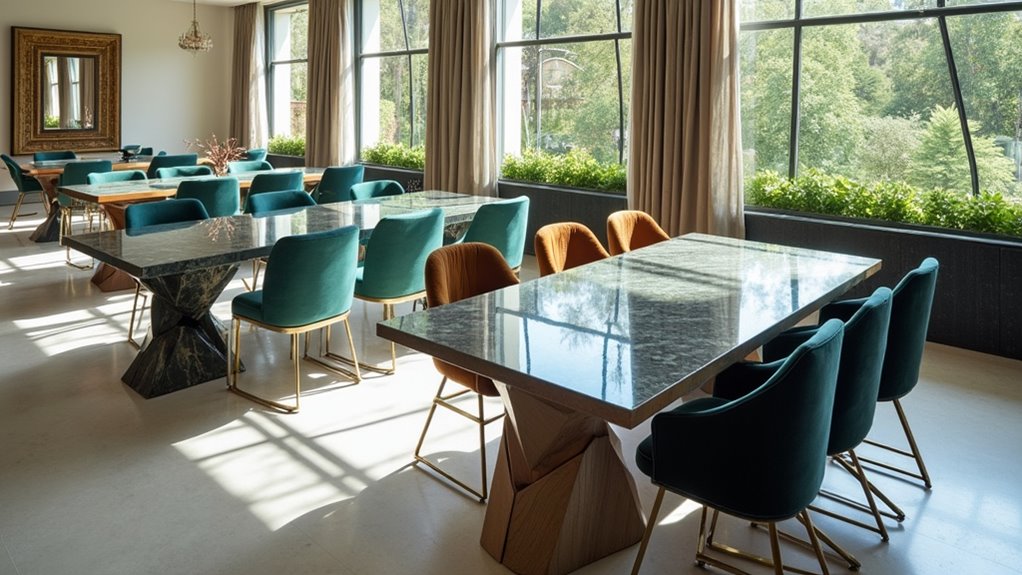To determine how many yards of fabric to cover a dining chair, first measure key areas, including the seat and backrest, using a flexible measuring tape. Account for seams and folds, adding 4 to 6 extra inches for wrapping. Typically, 1 to 2 yards is sufficient for one chair, depending on the style and fabric width. Consider fabric type for durability. Follow these steps, and uncover more insights into the reupholstery process.
Key Takeaways
- Measure the chair’s dimensions carefully and note the back, seat, and armrest measurements.
- Add 4 to 6 extra inches to each measurement for wrapping and seams.
- Convert total measurements to yards, typically requiring 1 to 2 yards for a standard dining chair.
- Consider fabric width; 54-inch wide fabric generally covers more area than narrower options.
- Factor in complex chair designs, which may require additional fabric for detailed areas.
Understanding Fabric Requirements
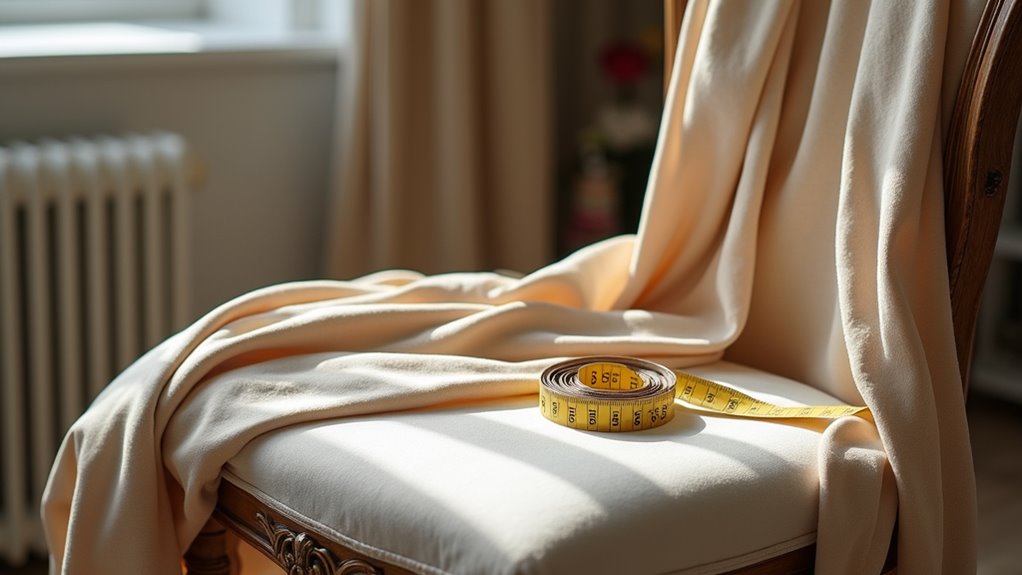
When selecting fabric for dining chair upholstery, it is essential to consider various fabric requirements to ensure both aesthetic appeal and durability.
One must first evaluate the fabric types, opting between natural materials like cotton, linen, or wool for breathability, or synthetic options such as polyester and microfiber for superior strength and stain resistance. Chair styles like cloth or padded chairs influence fabric choices based on comfort and maintenance needs.
Durability becomes paramount in high-traffic areas, promoting choices like leather or performance fabrics. Higher density foam options can also improve durability and support for frequently used chairs, enhancing both comfort and functionality. The weight of the fabric influences its draping, while textures such as velvet can enhance visual allure but demand careful handling. Additionally, fabrics such as vinyl upholstery provide high durability and ease of maintenance, making them a practical choice for dining chairs.
Blends offer a sweet spot of softness and resilience, making them ideal for dining chairs.
Employing appropriate upholstery techniques will ensure a beautiful, functional finish, tailored to withstand everyday use.
Measuring Your Chair
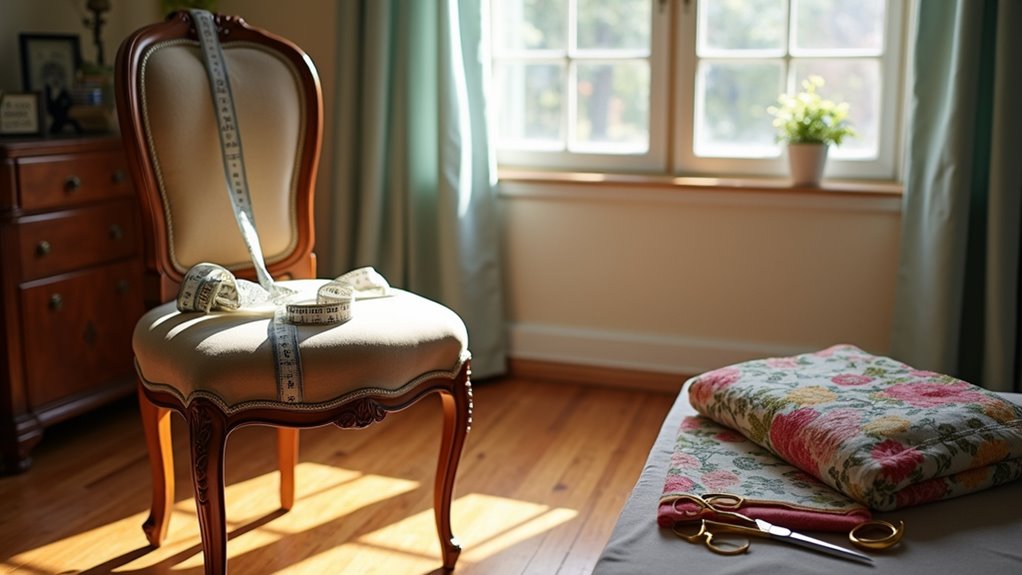
Accurate measurements are pivotal when embarking on a dining chair upholstery project, as they directly influence the success of the endeavor. Start by taking measurements of the chair seat after removing it from the frame. A flexible measuring tape is essential for capturing curves.
Use masking tape to mark key points, and record dimensions with pencil and notebook. Don’t forget to measure the chair back, adding allowances for seams and folds.
For precise cutting, a carpenter’s square is invaluable. Once measurements are gathered, use a calculator to convert inches to yards and account for extra fabric, especially if adding details.
Preparing for Reupholstering
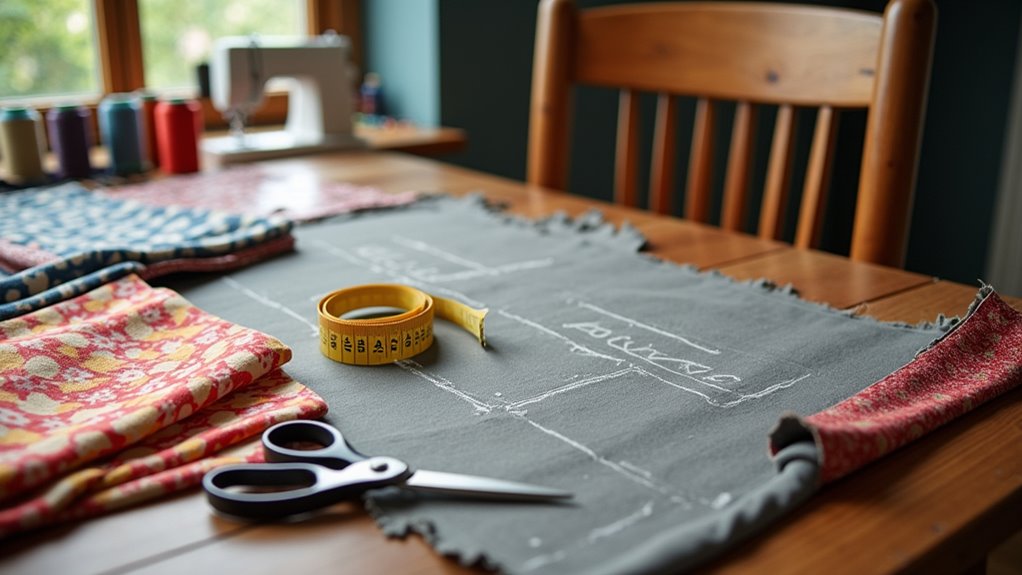
Before diving into the reupholstering process, proper preparation sets the stage for a successful transformation of the dining chair. A well-thought-out toolkit is essential, comprising a staple remover, needle-nose pliers, a screwdriver, and safety glasses to protect from flying debris.
Establishing a dedicated workspace is equally important; a clear area with a protective drop cloth will ensure organization and cleanliness. As the old upholstery is removed, documenting the disassembly with photos will aid reassembly.
Inspect the chair frame and foam, ensuring any necessary repairs are made. With materials prepped—new fabric washed and ironed, and foam shaped—one can confidently embark on this rewarding creative endeavor, transforming the dining chair into a refreshed centerpiece.
Cutting and Attaching New Fabric

Cutting and attaching new fabric to a dining chair transforms an old piece into a vibrant statement. First, precise measurements ensure the new fabric fits perfectly, with an additional 4 to 6 inches to accommodate wrapping. Using the old fabric as a template simplifies cutting, while flat ironing the new fabric guarantees a smooth surface. Employing effective stapling techniques is crucial; starting at each corner and working center-outward secures a taut, wrinkle-free finish. For a polished look, adept corner treatments, such as the pleated or diagonal “sail” methods, prevent bulkiness while providing elegance. Customized chair cover replacements, like the stretch and form-fitting covers made from polyester and spandex, not only enhance aesthetics but also protect against damage. Finally, trimming excess fabric must be done carefully to maintain stability without compromising aesthetic appeal. The result promises to invigorate any dining space.
Final Touches and Reassembly
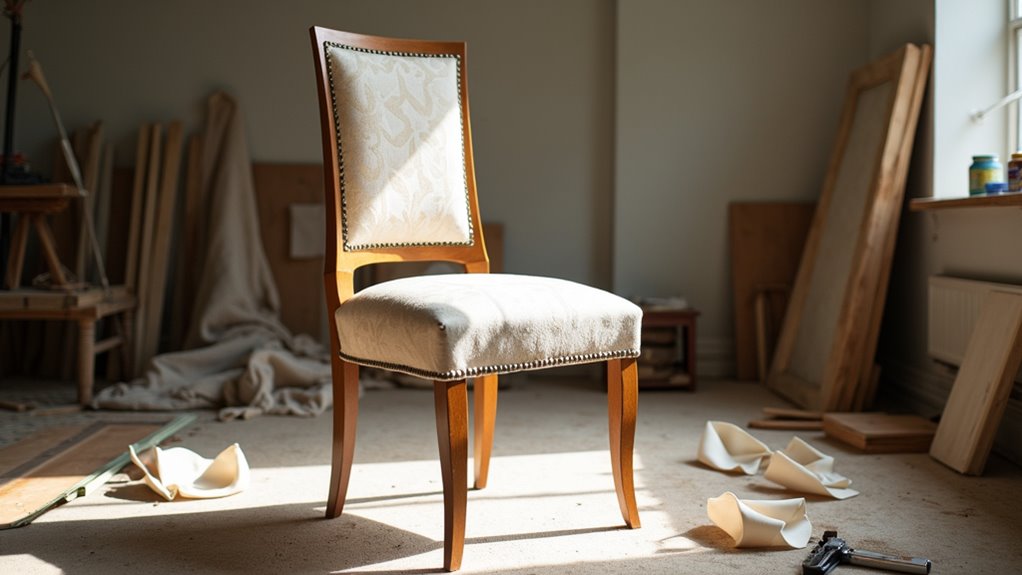
The finishing touches can elevate a newly upholstered dining chair from functional to fabulous. To ensure an impeccable look, trimming excess fabric closely—around an inch from the staple line—is essential, using sharp fabric scissors for smooth edges. Next, install a dust cover to conceal staples, marking screw locations prior to stapling it securely. Before reassembly, apply a protective fabric spray to guard against spills, opting for washable or waterproof materials for easy maintenance. For an eye-catching finish, add decorative trim to hide raw edges and enhance the chair’s aesthetic. A striking embodiment of Mid-Century Modern design can further enhance the character of the upholstered chair with vibrant colors and clean lines. Finally, position the seat onto the chair frame, ensuring precise seat alignment and making any final adjustments for a polished, professional result.

